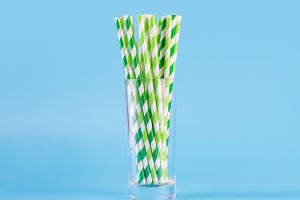Disposable tableware has become a staple for quick meals, parties, and outdoor events.
However, traditional plastic options contribute to significant environmental harm, taking hundreds of years to degrade and leaving toxic residues behind.
As awareness grows, biodegradable disposable tableware offers a sustainable alternative. Here's an exploration of the benefits, materials, and best practices for using biodegradable tableware to reduce our environmental impact.
Traditional disposable tableware, usually plastic or Styrofoam, is non-biodegradable and accumulates in landfills and oceans, harming wildlife and ecosystems.
In contrast, biodegradable tableware is made from plant-based materials that decompose naturally, breaking down without releasing toxins. Choosing biodegradable options can reduce our plastic footprint and support a cleaner planet.
Biodegradable tableware uses plant-based or compostable materials designed to break down quickly and safely. Some of the most popular options include:
Bamboo: This fast-growing plant produces lightweight, compostable tableware that decomposes within months.
Bagasse: A fibrous byproduct of sugarcane production, bagasse is molded into sturdy, compostable plates, bowls, and trays, ideal for both hot and cold foods.
Palm Leaves: Naturally fallen palm leaves are pressed into unique, biodegradable tableware, decomposing within a few months.
Cornstarch (PLA): Polylactic acid (PLA) is made from fermented cornstarch and used in utensils and cups. PLA requires industrial composting to break down, making it ideal for areas with access to composting facilities.
Paper and Cardboard: Often lined with compostable coatings, these materials break down easily and are widely used for eco-friendly tableware.
Switching to biodegradable tableware offers numerous benefits:
Reduced Plastic Waste: Eliminates the need for single-use plastics, which harm ecosystems and pollute waterways.
Lower Energy Consumption: Producing biodegradable materials uses less energy than plastic, reducing greenhouse gas emissions.
Wildlife Safety: Biodegradable products break down naturally, posing less risk to animals and marine life.
Composting Benefits: Many biodegradable items can be composted, providing organic matter that supports soil health and reduces landfill waste.
While biodegradable tableware is a positive step, using and disposing of it correctly enhances its environmental impact:
Choose Certified Compostable Products: Look for certified compostable items, which ensure decomposition within a specific timeframe under composting conditions.
Dispose Properly: Many biodegradable materials need specific conditions to break down. Dispose of them in compost facilities when possible, as regular landfill conditions may inhibit decomposition.
Encourage Eco-Conscious Choices: Share the benefits of biodegradable tableware with friends and family to promote eco-friendly habits.
Reduce and Reuse When Possible: While biodegradable options are preferable for single-use, reducing disposable usage altogether is ideal. Reserve biodegradable products for larger events and choose reusable tableware whenever possible.
Biodegradable disposable tableware is an impactful step in reducing waste and conserving resources. As demand grows, companies are innovating with renewable materials, providing eco-friendly alternatives to traditional plastics.
Biodegradable tableware is not only convenient but also aligns with sustainable lifestyle goals.
Understanding the materials, benefits, and proper disposal methods can help us make better choices and contribute to a cleaner environment.
For parties, picnics, or everyday needs, biodegradable tableware offers a practical solution that balances convenience with environmental responsibility, supporting a sustainable future.


